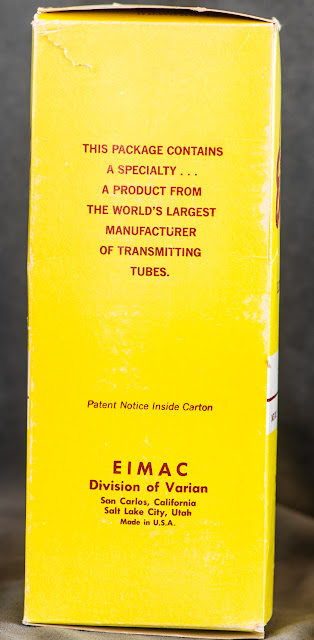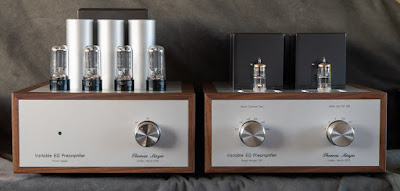Hi!
For this months tube presentation I picked a rather unusual specimen from my collection. The EIMAC 75TH.
The 75TH is a transmitting tube designed for amplifier (RF as well as audio) Oscillator or Modulator applications.
The tube has a thoriated tungsten filament which operates at 5V and consumes a hefty 6.25A. It has a maximum plate voltage of 3kV and can dissipate 75W. The plate glows orange in normal operation. For audio amplification the tube was intended to be used in pairs in a Class B output stage with the grids being driven positive. A pair 75TH can deliver 300W in that configuration. Some intrepid audio designers use this tube in single ended operation. In fact EIMAC tubes have some followers who swear by them. For complete technical information look up the data sheet. As can be seen in the pinout diagram on the left the tube has a UX4 base but only 2 pins are used for the filament. The plate is brought out at the top while the grid is connected from the side just below the spherical part of the bulb. The connections do not have caps but the bare rods which protrude through the glass are accessible. There had been accessories available to make the connection. These will be shown below.I only have 3 pieces 75TH and never built anything with them. With just so few samples at hand I do not plan to use them. So many tubes, so little time. Nevertheless it is an interesting tube which deserves it's spot in the tube of the month series.
The tube is basically a sphere which extends from a glass tube. Certainly very aesthetic.




































































